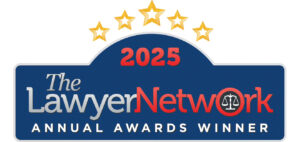Coaches are important, not only in the development of athletes but also in the overall success of a team or a club. They have obligations to parents, leagues and associations as well as to their sport generally. In fulfilling these obligations coaches are bound by the law. They may also be bound by the policies and rules of their individual sporting organisations. This means coaches can be liable or legally responsible for a wide range of issues including those relating to negligence, sexual harassment and personal misconduct.
Considering all these factors coaches are open to a lot of scrutiny. In light of this it becomes very important that coaches protect themselves as far as possible. In this article Solicitor, Paul Horvath aims to help coaches not only avoid the escalation of concerns by establishing suitable management strategies but also to ensure a fair resolution of legal issues should they arise.
Negligence Claims
For a negligence claim to be successful, it must be proven that a coach has a duty of care, that they breached that duty and that this breach caused the injury. Considering the position of power, control and trust held by coaches it is not hard to see why coaches owe a duty of care to their athletes under the law of torts. (The law of torts addresses and provides remedies for issues arising out of civil wrongs and not out of contractual obligations)
Whether there has been a breach of care depends upon the standard of care necessary, which is a flexible concept. It is likely that a higher standard will be expected to professional coaches in comparison with volunteer coaches. It is also likely that a higher standard will be expected for a coach of a high risk activity. The test is whether a reasonable person in the position of the coach would have foreseen that the acUomission involved a degree of risk that was real.
It must also be shown that it was the act/omission that caused the injury.
Following Whitehead v Carlton, professional athletes are no longer entitled to statutory worker’s compensation. It is likely that injured athletes will now seek common law damages from parties who may have been negligent. This will lead to a greater risk of personal liability for coaches. In this case, Whitehead, a professional footballer for Carlton Football Club, sued the club for injuries to his foot and ankle. He was given injections and sent back onto the field to play, which worsened the injury, shortened his career and led to long term physical damage.
Coach take out: If a coach directs a player to play knowing they are injured, and encourages medical treatment to facilitate this, they may be legally liable for the injury that flows.
For a negligence claim to be successful it must be proven that a coach has a duty of care, that they breached that duty and that this breach caused the injury.
Considering the position of power, control and trust held by coaches in respect of their athletes (or clients), it is not hard to see why coaches owe a duty of care to those athletes under the law of torts.
Whether there has been a breach of care depends upon the standard of care necessary. This can be a flexible concept. For example it is likely that a higher standard of care will be expected of professional coaches in comparison with volunteer coaches. It is also likely that a higher standard will be expected for a coach of a high risk activity such as in combative or contact sports.
The test is whether a reasonable person in the position of coach would have foreseen that the act or the omission involved a degree of risk that was real.
It must also be shown that it was the act/omission that caused the injury.
Avoiding Negligence Claims
Coaches have a duty to supervise, that is, to observe and control athletes under their care. The more risk involved in an activity, the more critical it is that proper supervision is provided. Open communication with athletes is important and coaches should tell athletes of the risks involved with the sport.
Coaches can avoid negligence claims by referring to other people if they are in doubt. For example, if a coach is unsure whether an athlete will cause further injury if they continue to participate, the coach should suggest to the athlete that they consult a medical practitioner. Coaches can undertake some form of medical training so they are aware about the possibilities of injury and the basic treatment necessary if injury does occur.
Having the right insurance cover as a coach is essential. In Victoria for example volunteer coaches engaged by an incorporated club or association are immune from legal liability. The club, association or community organisation which engages the coach usually carries the liability.
In Foscolos v Footscray Youth Club, a fairly inexperienced young male wrestler was mis-matched against a more experienced wrestler. During the bout the plaintiff landed on his head causing immediate and severe injury. It was found that the supervision given by a wrestling coach was inadequate and that this breach of duty led to the plaintiffs quadriplegia. The judgment for the plaintiff was for a sum in excess of $5,000,000.
Coach take out: Although the coach cannot control the actions of another wrestler, if proper supervision had occurred, the match could have been stopped immediately when it appeared to be too dangerous. A coach supervising a high risk activity like wrestling must not get distracted even momentarily or they could be held liable for injury that occurs.
McCracken v Melbourne Storm Rugby League begs the question whether coaches should be liable for overly aggressive conduct of their players. In this case, a Rugby League coach said that elite players of this sport are taught and encouraged by their coaches to ‘make significant impact at the collision stage of a tackle by…accelerat[ing] into the tackle with optimum force’. He also said that ‘when they have caught an attacking player’ they are to ‘put him onto the ground forcefully to cause hard and bruising impact with the ground which will hurt and discourage the attacker.’ Although in this case it was found the actions of the two players involved went beyond what had been taught and that they employed unreasonably dangerous methods it is interesting to speculate about liability if they were simply adopting methods taught and encouraged by their coach. There seems no reason why a coach could not be held liable in such a case.
Coach take out: Coaches should not teach or encourage dangerous behaviour. They should discourage dangerous methods and communicate with athletes as to the risks involved in adopting such methods.
Avoiding Complaints
Coaches can be bound to the rules and policies of sporting organisations. Sporting organisations manage their own risk by introducing policies and codes of behaviour for people in specific roles including coaches, athletes and officials. Coaches have a greater chance of avoiding a breach of the rules if they know and understand the rules they will be judged against.
Codes do give hints to coaches on how they can manage risk. For example, the code of behaviour that accredited coaches are required to sign includes the following.
- Wherever practical, avoid unaccompanied and unobserved one-on-one activity (when in a supervisory capacity or where a power imbalance will exist) with people under the age of 18 years.
- Adopt appropriate and responsible behaviour in all interactions.
- Ensure your decisions and actions contribute to a harassment free environment.
- Any physical contact with a person should be appropriate to the situation and necessary for the person’s skill development.
In Zubkov v FINA (involving the Ukrainian swim coach from the Melbourne 2007 World Swimming Championships and his daughter) although it was concluded that the confrontation between the father and daughter was of a personal nature, Zubkov was suspended for eight months after being found to have committed an act of misbehaviour. This result was only achieved after an appeal to the Court of Arbitration for Sport in Switzerland led to the overturning of an initial lifetime ban.
Coach take out: Sporting codes now include provisions which penalise conduct which has the potential to bring the sport into disrepute. This includes personal conduct. Coaches, like athletes, must act professionally and behave ethically at all times if they are to avoid complaints.
Ensuring a fair resolution after a complaint
An allegation, even if cleared, can leave a coach’s reputation undermined. Therefore the best practice is to take steps to avoid allegations. However, it is not always possible and mistakes are a part of life.
If an allegation is made against you, your responsibilities in managing your risks continue. There are steps to take to ensure a fair hearing which mean you have to know your rights to be able to enforce them. Sporting disputes are heard outside the legal system and sporting tribunals do not always ensure a fair and transparent process and therefore coaches need to be aware of their own rights before it is too late.
The principles of natural justice generally prevail, which means you are to be afforded time to prepare and present your case. You are entitled to know the allegations against you and which rules have allegedly been breached. You are entitled to be heard by an unbiased tribunal. If penalised, your penalty is to be proportionate to your misconduct.
If such rights are not enforced the consequences can be dire. Zubkov v FINA highlights this perfectly. Zubkov, was not told of the allegations against him, was not afforded appropriate time, and was banned from the sport for life. Zubkov appealed because the appropriate principles had not been applied. On appeal the penalty was said to be·disproportionate and was reduced to an eight month suspension.
Coach take out: It is important coaches check that the standard of the complaints handling process is appropriate when you sign up to be bound by it, otherwise it may be too late once proceedings’ commence.






